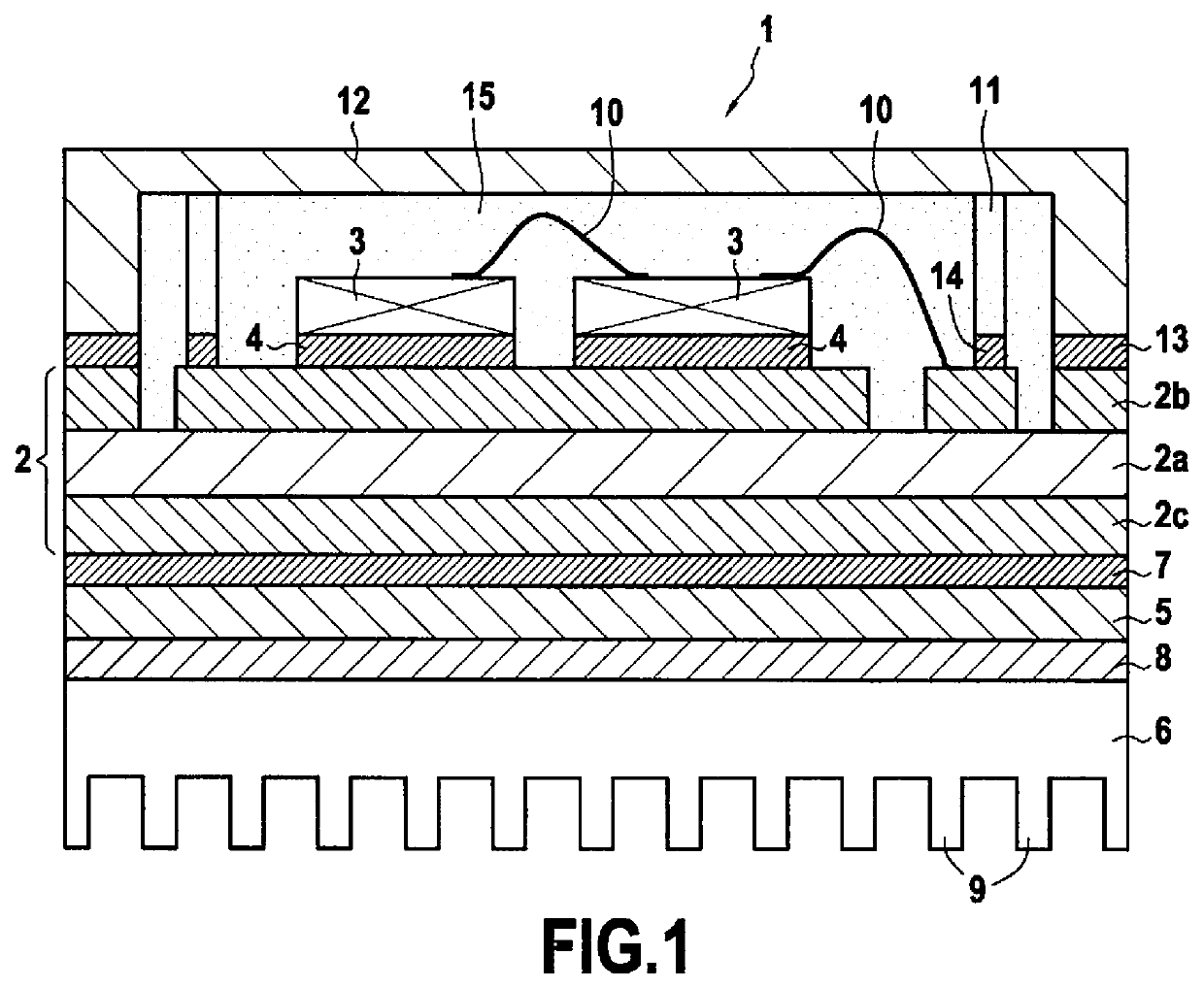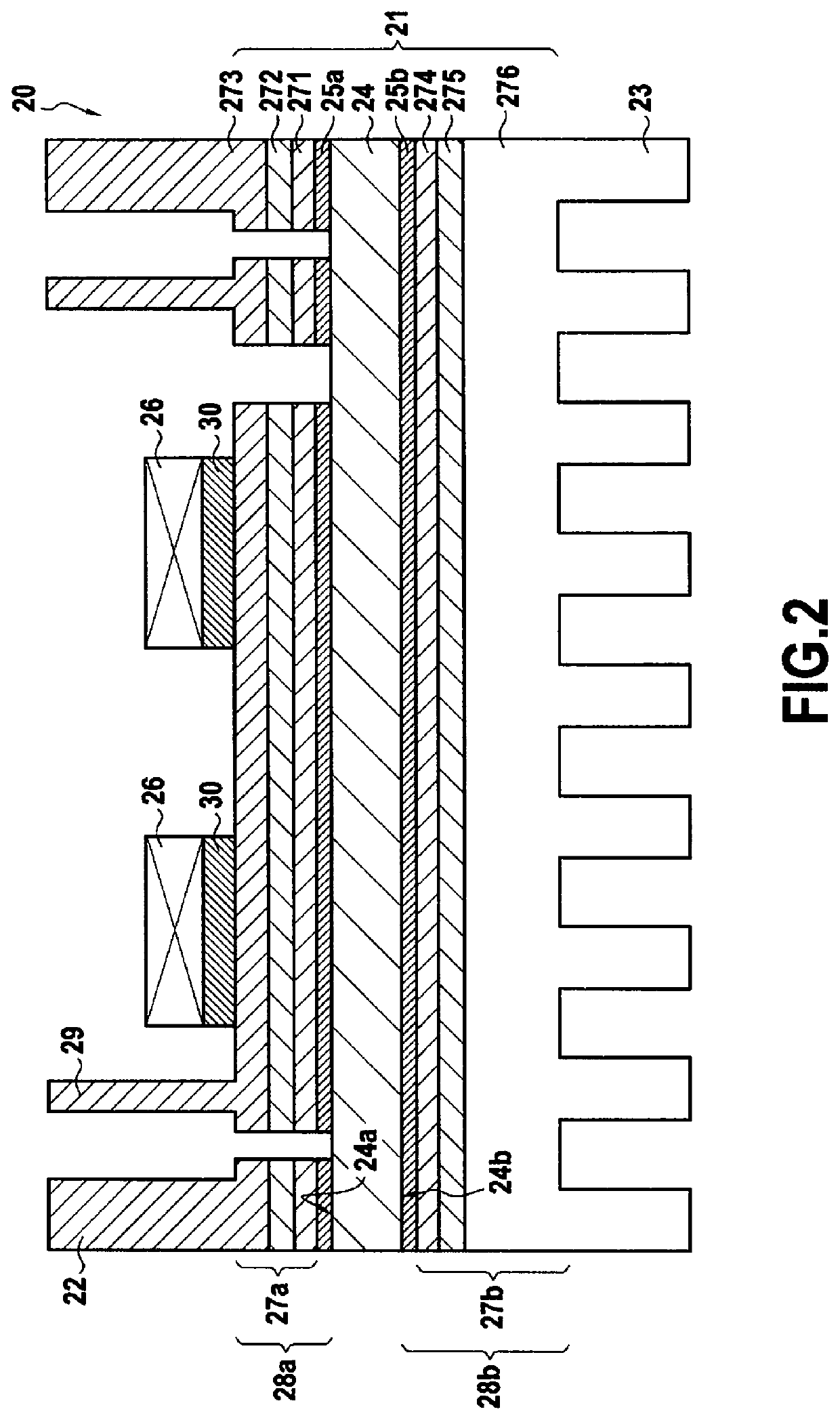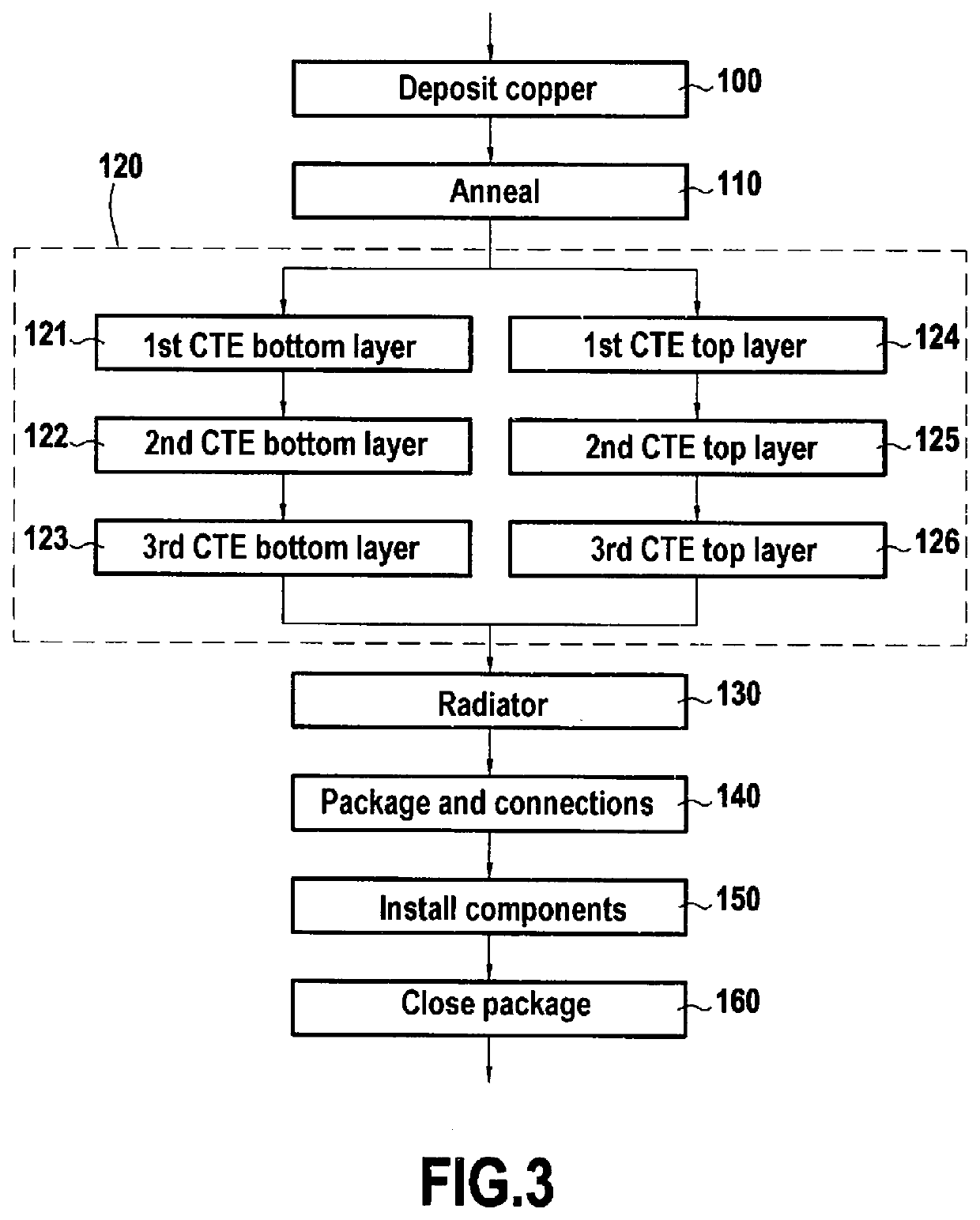A method of fabricating an electronic power module by additive manufacturing, and associated substrate and module
a technology of electronic power modules and additive manufacturing, which is applied in the direction of protein food ingredients, protein food ingredients, and semiconductor/solid-state device details, etc., can solve the problems of limiting the reliability of electronic power modules b, non-uniform thermal resistance, and layer 8/b> of thermal interface materials, so as to achieve the effect of reducing drawbacks
- Summary
- Abstract
- Description
- Claims
- Application Information
AI Technical Summary
Benefits of technology
Problems solved by technology
Method used
Image
Examples
Embodiment Construction
[0049]FIG. 2 is a diagram of an electronic power module 20 in an embodiment of the invention.
[0050]The electronic power module 20 comprises a substrate 21, a package 22, and a radiator 23.
[0051]The substrate 21 comprises an insulating plate 24 made of ceramic, e.g. Al2O3 or AlN, presenting a first face 24a and a second face 24b opposite from the first face 24a. The insulating plate 24 also has a first copper layer 25a and a second copper layer 25b deposited by silkscreen printing, respectively on the first face 24a and on the second face 24b of the insulating plate 24, which copper layers have been subjected to annealing. The first copper layer 25a forms electrically conductive tracks for connecting to electronic components 26, and the second copper layer 25b forms thermally conductive tracks for thermally coupling to the radiator 23.
[0052]The substrate 21 also has a first lay-up 27a of thermomechanical transition layers and a second lay-up 27b of thermomechanical transition layers....
PUM
| Property | Measurement | Unit |
|---|---|---|
| temperatures | aaaaa | aaaaa |
| temperature | aaaaa | aaaaa |
| thick | aaaaa | aaaaa |
Abstract
Description
Claims
Application Information
 Login to View More
Login to View More - R&D
- Intellectual Property
- Life Sciences
- Materials
- Tech Scout
- Unparalleled Data Quality
- Higher Quality Content
- 60% Fewer Hallucinations
Browse by: Latest US Patents, China's latest patents, Technical Efficacy Thesaurus, Application Domain, Technology Topic, Popular Technical Reports.
© 2025 PatSnap. All rights reserved.Legal|Privacy policy|Modern Slavery Act Transparency Statement|Sitemap|About US| Contact US: help@patsnap.com



